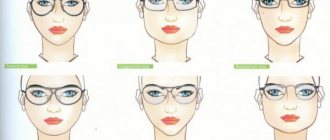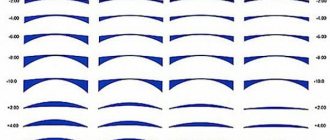After the ophthalmologist has written a prescription for glasses to the patient, it is time to go to the optician and choose the appropriate glasses. After placing an order, you will have to wait several days or weeks for the finished product. Today, companies are engaged in the production of glasses, and many buyers are interested in how the process of making glasses proceeds.
The production of glasses is a technologically complex process that should only be carried out by a professional. But in order to get a general idea of the manufacturing of frames and lenses, you need to understand what stages it consists of.
Frame
First, the frame is selected. The choice depends entirely on your budget and preferences, but it is worth considering in advance that some types of lenses will not fit into some frames.
After the frame is selected, the master will remove the false lenses from it and place them on the sharpening machine. The equipment will “remember” the shape and size of the glass, according to which the specialist will grind the lens and install it in the future frame.
Form
In addition to frame materials, sunglasses come in a wide variety of shapes and styles. In general, there are three main types of frames: full, partial, and glasses without frames at all.
Full-frame glasses are most often made of plastic or metal. As is often the case with sports glasses, the frame completely encloses the lens, guaranteeing the eye protection from wind and dust. Typically, those who need sunglasses for professional reasons usually choose full frames. Partial frames most often cover the top and sides of the lens, leaving the bottom portion free. Rimless glasses are fixed with a central link between the lenses on the bridge of the nose. In such glasses, this bridge has the most important supporting function, because it actually protects the lenses and face from pressure, and also distributes weight. A bridge on the bridge of the nose is also an element of style and helps to correct the features of the facial structure, for example, people with large noses are suitable for glasses with a lower rise, while glasses with a high bridge are perfect for thin noses. Moreover, the bridge shapes the overall appearance of the glasses and determines how suitable they are for a particular face type.
Lenses come in a wider variety: polarized, mirrored and colored, with red, grey, brown and green being especially recommended as they are less color distorting than yellow ones, despite their ability to sharpen the view. Thanks to this quality, the latter are very popular among athletes, especially skiers, hunters and pilots. The lens is actually a determinant of the quality of glasses, because it protects your eyes, and it is on this that you should concentrate your attention when choosing, and it is for this reason that visiting a professional optician's salon will guarantee you a better result.
Lenses
The optics department will be able to produce custom-made both corrective eyeglasses and sun protection optics. The production of lenses for vision correction proceeds in two directions: the production of simple and complex lenses. By complex products we mean:
- bifocal, astigmatic and progressive lenses;
- lenses with a diopter of more than 7.
If previously lenses were made primarily of glass, now manufacturers are increasingly using high-quality plastic in production. Buyers have access to lenses of various colors and degrees of darkness.
In addition to making the lens, other tasks are performed in the process:
- coloring of polymer lenses;
- tightening the screws to the required level;
- polishing the edges of mineral and polymer products;
- cleaning glasses with ultrasound, etc.
Depending on the diagnosis, the lenses will be converging or diverging. Positive collecting products are prescribed for patients with farsightedness, and negative scattering products for those with myopia.
Production of lenses for glasses
The process of making glasses lenses
The following procedure assumes that the plastic lenses are made in an optical laboratory.
1 A laboratory technician enters an optical prescription for a pair of plastic lenses into the laboratory computer. The computer then provides a printout indicating the additional information needed to obtain the required prescription.
2 Based on this information, the technician selects appropriate plastic lens plugs. Each form is placed in the prescription tray along with the client's eyeglass frames and original work order. The recipe tray will remain with the technician throughout the entire production process.
Although the corresponding curves have already been sharpened at the front of the lens, the specialist still has to grind the curves at the back of the lens. This is done in the curve generator. After the lenses are polished, they are placed in an edge sander, which sands each lens to its correct shape and places a bevel around the edge so that the lens fits the glasses frames. After any necessary tint applications, the lenses are placed into the frames.
Although the corresponding curves have already been sharpened at the front of the lens, the specialist still has to grind the curves at the back of the lens. This is done in the curve generator. After the lenses are polished, they are placed in an edge sander, which sands each lens to its correct shape and places a bevel around the edge so that the lens fits the glasses frames. After any necessary tint applications, the lenses are placed into the frames.
The plastic blanks have various curves already sharpened at the front; therefore, the technician must select a blank that matches the optical prescription required for each lens. The remainder of the optical prescription or power must be grounded at the rear of the lens.
Blocking glasses lens
3 The technician places the lenses into a lensometer, an instrument used to locate and mark the "optical center"—the point that should be centered over the client's pupil—of the lens blanks.
Adhesive tape is then applied to the front of each piece to prevent the front from being scratched during the "locking" process. The technician then places one lens blank at a time into a “blocker,” which contains a heated lead alloy that melts the block to the front of the blank. Blocks are used to hold each lens in place during the grinding and polishing process. 4 The technician then places each workpiece into a generator, a grinding machine that is set to the optical recipe. The generator grinds the corresponding optical curves at the back of each lens. After this step, the lenses should be "fined" or polished.
Polishing glasses lenses
5 The technician selects a metal lens housing—a shape that matches the desired optical purpose of the lens—and both lenses are placed in the finishing machine with the back of each lens on the appropriate elbow.
The front of each lens is then polished in a series of cleaning operations. First, each lens is rubbed into an abrasive pad of soft sandpaper. After a second cleaning pad, made of smooth plastic, is placed on top of the original sandpaper, the lens is polished again as the cleaning machine rotates the pads in a circular motion while water flows over the lenses. Once the initial plastering process is completed, the two spacers are removed and discarded. 6 Next, the gaskets are removed from each lens and soaked in hot water for several minutes. The spacers are then attached back to the lenses and placed into the edging machine where the third and final spacer is attached. The coloring machine rotates the pads in a circular motion while a polishing mixture of aluminum oxide, water and polymers flows over the lenses.
7 The lenses are removed from the machine for cleaning and the unit attached to each lens is carefully removed with a small hammer. The tape is then removed from each lens by hand. The spacers are sterilized before they are used to mount other lenses. 8 Each lens is marked with the letter "L" or "R" with a red grease pencil, indicating the left and right lenses. After the lenses are placed back into the lensometer to check and mark the optical center and inspect other curves necessary for proper optical assignment, a bouncy pad, a small round metal holder, is attached to the back of each lens.
Cutting off glasses lenses
9 The technician then selects a lens design that matches the shape of the glasses frame and inserts the design and lenses into the edging machine.
The machine grinds each lens into its correct shape and places a bevel around the edge of the lens to ensure the lens fits the glasses frames. Water flows through the lens throughout this entire process. 10 If the lenses require additional grinding, the process is performed manually using an installed electric grinder. This step is necessary for inserting lenses into metal or frameless frames that require more precise bevels.
Finally, the lenses are dipped into the desired container for treatment or coloring. Once dry, the eyeglass lenses are ready to be inserted into the desired frames. The optical lab may send the lenses back to the optical outlet without frames, in which case the optical outlet will insert the lenses into the frames.
By-products
By-products or waste from the manufacturing process include plastic dust or fine shavings and a liquid polishing compound consisting of aluminum oxide, water and polymers. Waste is placed in metal containers for 48 hours along with sanitary compounds (cat litter vermiculite) before disposal.
Lens processing
After you have decided on the lens, its material, tint and diopter, it is sent for further processing.
First, work is carried out on a dioptrimeter, which remembers the refractive power of the lens and displays it quantitatively, that is, in diopters. Then the specialist scans the frame and correlates the glass and frame data. The slides are then sent to a centering chamber that precisely determines the lens center, refraction, cylinder axis, progressive lens marking, or bifocal segment.
Then the lenses are placed in a machine, which has already been filled with the required size and shape parameters, so turning begins. At the same time, a stream of water washes away the dust. The treatment only takes a few minutes. Finally, the edges of the lens are processed to fit tightly into the frame.
After these steps, the lens is carefully inserted into the frame and fixed there. Thus, the production of glasses takes only 30 minutes. But there are more complex cases that require more effort and time. It is very important to take a responsible approach to the choice of optics, frames and lenses. If everything is done correctly, the glasses will 100% fulfill their main function - vision correction or protection from UV rays.
How are glasses lenses made?
Eyeglass lenses are glass or plastic optical elements that are placed in eyeglass frames to enhance and/or correct the user's vision.
Invented in the early 1200s, the magnifying glass was the first optical lens used to improve vision. Made from a clear quartz and beryl lens, the invention revealed the critical discovery that reflective surfaces grounded at certain angles could improve vision. Following this invention, Alessando di Spina introduced glasses to the population. Due to the growing demand for glasses, quartz and beryl lenses have been largely replaced by glass lenses. The convex lens was the first optical lens used in glasses to correct farsightedness, but it was followed by other corrective lenses, including the concave lens for correcting myopia and more complex lenses for correcting astigmatism, as well as the invention of the Bifocal by Benjamin Franklin in 1784. More than 80 percent of all glasses worn today have plastic lenses, but plastic lenses have not always been the lens of choice. Glass lenses remained dominant until 1952, when plastic lenses were introduced. Plastic lenses quickly grew in popularity because they were lighter and less prone to breakage. Today, the production of plastic spectacle lenses is far superior to that of glass lenses, but the process remains virtually the same for both types. Plastic and glass lenses are produced through successive steps of fine grinding, polishing and shaping. Although the same process is used to produce lenses for telescopes, microscopes, binoculars, cameras and various projectors, these lenses are typically larger and thicker and require more precision and power. This article will focus on plastic spectacle lenses.
In the past, opticians relied on separate optical laboratories to produce eyeglass lenses. Today, there are a number of full-service optical locations that produce lenses on-site for customers. However, optical outputs do receive lens "blanks"—plastic parts already formed to near-exact dimensions, with various curves bent into the front of the lens—from optical labs. Blanks with different curves are used for specific optical requirements.
Raw materials
Plastic blanks obtained from optical laboratories are round pieces of plastic, such as polycarbonate. They are 75 inches (1.9 centimeters) or thicker and are similar in size to eyeglass frames, although slightly larger. Most off-the-shelf spectacle lenses are sharpened to a minimum. 25 inches (.63 cm), but this thickness may vary depending on the specific optical prescription or "power" required. Other materials used to make eyeglass lenses:
- Scotch;
- Lead alloy based liquid;
- metal;
- Dyes and shades;
Design
Eyeglass lenses come in a variety of shapes to match your eyeglass frames.
The thickness and contour of each lens will vary depending on the extent and type of correction required. Additionally, the bevel surrounding the edge of the lenses will be designed to hold the lenses in the desired eyeglass frames, and some lenses, such as those for metal and frameless frames, will require more detailed edging to fit securely into the frames. After the lens blanks are received from the factory, the laboratory technician selects the appropriate blanks and places them in the lensometer. This is a tool used to locate and mark the "optical center" - the point that should be centered on the client's pupil - of lens blanks.
Convex and concave lenses, known as spherical lenses, require one ground curve per lens, while astigmatism correction requires more curves. The degree and angle of the curve or curves in a lens determines its optical power. Various lens treatments and tints are added after the lenses are formed but before they are inserted into the frames. Coatings are added by dipping lenses into heated metal containers filled with a treatment or tint. Treatments and shades available include various shades and colors of sunglasses, UV light shades, durability and impact resistance, scratch resistance. One of the latest advances in tint is photosensitive tint, which combines the benefits of regular clear lenses with the protection of sunglasses. These lenses adjust according to the amount of sunlight, providing sun protection when needed. Various types of plastic are used to wear the eyes, but the most popular is the impact-resistant polycarbonate "Weight with Feathers" plastic. This type of plastic lens is more durable and is 30 percent thinner and lighter than regular plastic lenses. It's also a more expensive lens. Other lens types include the standard "CR 39" plastic lens - the CR 39 is a monomer plastic - and the "High Index" plastic lens, which is 20 percent thinner and lighter than regular plastic lenses.
“Glasses n-nada?” or “why are ready-made Chinese glasses with diopters harmful”?
Many people (especially older people, especially given the impatience of Russians) are tempted to buy ready-made eyeglasses (usually made in China) at a mall or mini-optics in a supermarket.
I asked medical optics expert Irina Shevich to tell Habr readers what this could mean. Glasses are medical products, but ready-made glasses cannot be said to be as accurate as those “at the pharmacy.” This is a “mass crowd”, with all the ensuing consequences.
All parameters in Chinese glasses are “floating”. You think you are buying +3.0, but there may be more or less - depending on your luck. Or no luck
The saleswoman at the kiosk explains to customers: “These are “universal” glasses, with “floating centers” 62-66.” If you check your glasses with a diopter, you can see that they are up to 70 - 72 mm.
An optician is not a clothing store, and glasses, with average data, are not a T-shirt of any size that can be tightened with a belt.
By the way, ready-made glasses, not only Chinese ones, do not take into account that a person may have one eye closer and the other further from the center of the bridge of the nose. One is higher, the other is lower. Symmetrical faces are practically not found in nature. The total distance of 64 mm consists of, for example, monocular 31/33 or 33.5/30.5.
As a result of incorrect centering of the lenses, the visual axis of the eye does not coincide with the optical axis of the lens, and then the person’s gaze enters the zone of aberrations (distortions). They are larger, the higher the optical power of the glasses, and the further from the center of the lens.
People wearing incorrectly assembled glasses lower, raise or tilt their heads to “look at” the optical center of the lens.
The eye makes a “setting” movement, unnatural motor tension occurs, which can develop into heterophoria (hidden strabismus). A person can only be saved by refusing to constantly wear such glasses, and hidden strabismus will arise for him for another reason - often because he does not use correction at all.
The purpose of glasses is to shift the focus of the image to the retina, but ready-made glasses do not correct astigmatism. The image “doubles”, because Instead of a point, the astigmatic eye builds two foci, two lines. Houses, trees, car dimensions, instead of clear contours, have shadows and blurry outlines. The internal eye muscle, responsible for clear vision, overstrains, causing microfluctuations. This can cause metabolic disorders in muscle fibers and contribute to the development of retinal pathology and other eye diseases.
As for the lens material in finished glasses, as a rule, it is the simplest and rather fragile optical plastic, with a cheap coating, or even without it at all. As a result, glasses transmit ultraviolet radiation that is harmful to the eyes, and additional stray reflections and scratches form on the surface of the lens.
A few videos on the topic
Have you seen magnifying glasses in Pyaterochka stores?
If your glasses are broken or forgotten at home, a magnifying glass will make it possible to read labels on products. Ready-made glasses are the same tool for temporary use - for the period while a person waits to receive glasses made to order, especially for him. I thank Irina Shevich, director of the Opti-Class Institute for Advanced Studies and Professional Retraining, for preparing the material.
If you have an interest in this topic (those who have not yet undergone ReLEx SMILE laser vision correction and have not gotten rid of glasses), write in the comments what questions regarding eyeglass correction interest you, and we will try to prepare relevant posts.
First steps
Before you organize your own business related to the production of glasses or frames for them, you need to take care of the following things:
- choose a suitable room, the minimum area of which should be 100 square meters. m.;
- purchase all the necessary equipment - cutting machines, polishing machines, as well as composters and grinding machines.
There are at least three options for organizing an eyewear business:
- independent production of all components for glasses;
- production of frames;
- assembly of products from ready-made components.
For new entrepreneurs, the most suitable option is the production of eyeglass frames.
In this case, it is necessary to take care not only of high-tech professional equipment, but also of high-quality materials.











